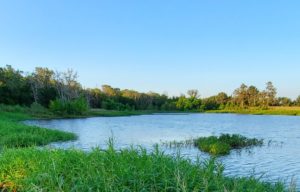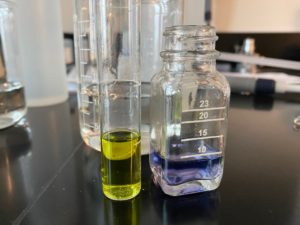As temperatures begin to warm up, pond owners may begin to look forward to stocking their ponds. One of the most common questions we get from new and experienced pond owners is “What tests should I get to determine if this pond will support a fishery?”. Usually when this question is asked, there are no obvious indicators to point pond owners in the right direction, which can lead to endless internet searches, leaving their heads spinning with a long list of tests and their associated costs.
The most common analysis we perform and always recommend first is the base water chemistry analysis. This analysis covers 8 water quality parameters, including pH, hardness, alkalinity, total salinity, total ammonia nitrogen, un-ionized ammonia, nitrite, and chlorides, that are fundamental in supporting fish populations and only requires 16-20 ounces of water for testing. Once we run all 8 tests, current concentrations are compared to acceptable and optimal ranges in a thorough report, along with suggested amendments.
In many instances, these parameters can be overlooked and may not be feasible for pond owners to do themselves, but should still be evaluated before stocking. Levels outside acceptable ranges can impact a fishery significantly; for example, decreased pH levels can increase stress on fish, leaving them more susceptible to disease which will impede on fish growth and larval survival.
Besides determining if their pond’s water can support a fishery, how do pond owners benefit from a base water test? Knowing concentrations for these parameters can also aide in pond management decisions dealing with aquatic plant management, fertilization applications, parasite or disease management, and pond clearing techniques.
Pond owners who are questioning if their water will support a fishery can send their water samples to The Texas AgriLife Extension Service Aquatic Diagnostic Laboratory for a basic water quality test to determine concentration readings and recommended amendments.
For more information on the importance of water quality and respective amendments, please read Understanding Water Quality Reports for Your Pond.


